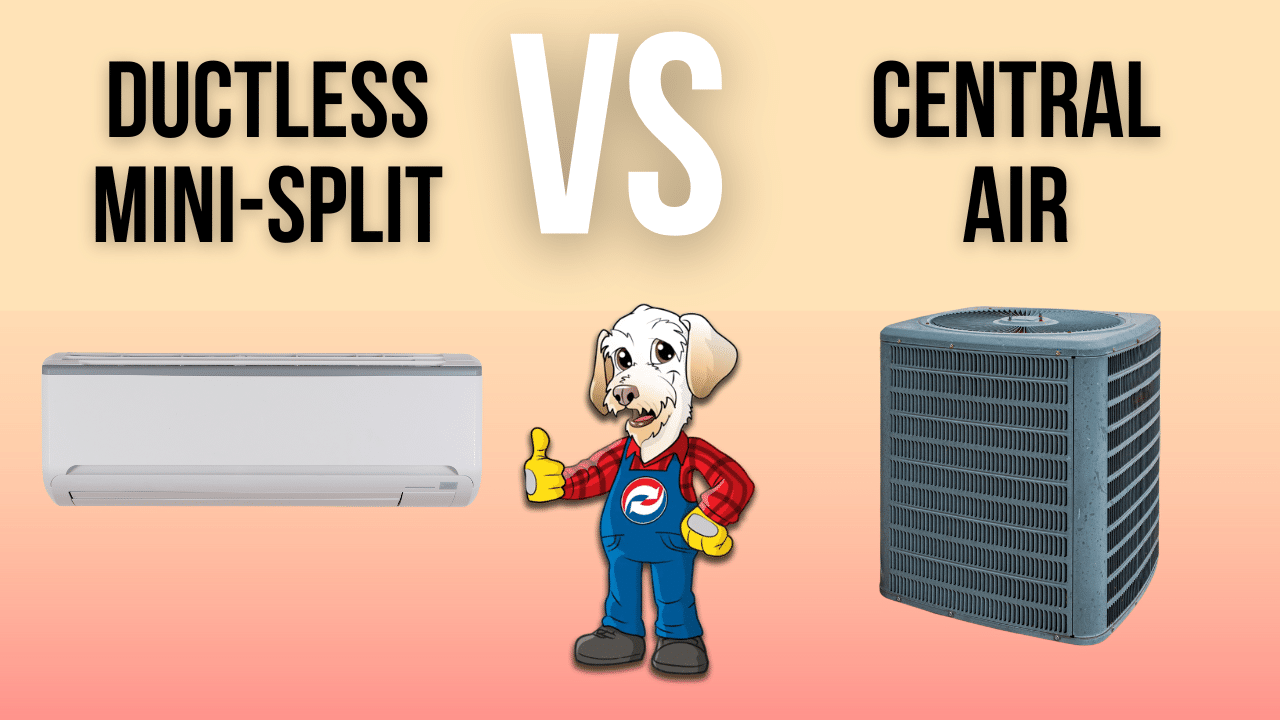Leonard Splaine Ductless Mini-Split vs. Central Air

As the battle for the most efficient and effective cooling and heating solution heats up, homeowners find themselves torn. In this blog, we unpack the pros and cons of Ductless Mini-Split and Central Air systems, offering insights into which might be the perfect fit for your unique needs. Whether you crave the precision of individual room control or the consistent climate throughout your entire home, join us on this exploration of the key distinctions between these two popular HVAC choices.
Understanding Mini-Split Systems
Efficiency at its Core
Mini-split systems, renowned for their energy efficiency, consist of an outdoor compressor and indoor air-handling units. These systems allow for zone cooling, letting you regulate temperatures in individual rooms. The efficiency gains result from the absence of ducts, reducing energy loss common in central air systems.
Installation Simplicity
The installation process of mini-split systems is a marvel of simplicity. With minimal disruption to your home, these systems offer a quick and efficient cooling solution. The absence of ductwork not only contributes to energy efficiency but also makes installation more straightforward, reducing overall costs.
Flexibility and Zoning
One of the standout features of mini-split systems is the ability to create personalized comfort zones. This not only caters to individual preferences but also leads to substantial energy savings. The flexibility of these systems ensures that you’re not cooling or heating unoccupied spaces, contributing to a more eco-friendly and cost-effective solution.
The Central Air Advantage
Whole-House Cooling
Central air systems, a traditional favorite, operate by distributing cooled air through ducts to various rooms. This centralized approach ensures a consistent and even temperature throughout the entire house. It’s an ideal solution for larger homes where maintaining uniform comfort levels is paramount.
Seamless Integration
For homes with existing ductwork, central air systems offer seamless integration. The utilization of a single unit for cooling the entire house simplifies the maintenance process and reduces the need for multiple units. This can be a compelling factor when considering long-term cost-effectiveness.
Enhanced Aesthetics
Unlike mini-split systems, central air conditioning systems are virtually invisible, with only discreet vents visible in each room. This enhances the aesthetic appeal of your living space while ensuring efficient and effective cooling without the need for individual units on the walls.
Making the Decision
Cost Considerations
While mini-split systems excel in efficiency and installation simplicity, central air offers whole-house cooling with a potentially lower initial investment for homes with existing ductwork. Consider your budget constraints and long-term energy savings when making this crucial decision.
Home Size and Layout
The size and layout of your home play a pivotal role in determining the most suitable cooling system. Mini-splits shine in smaller spaces where zoning is essential, while central air excels in larger homes with an established ductwork infrastructure.
Environmental Impact
For eco-conscious homeowners, the energy efficiency of mini-split systems may tip the scales. However, central air systems can also be optimized for energy savings through programmable thermostats and routine maintenance.
Frequently Asked Questions
Which system provides better temperature control?
Temperature control effectiveness varies between Ductless Mini-Splits and Central Air. Ductless Mini-Splits offer precise control in individual rooms, ensuring personalized comfort, while Central Air provides consistent temperatures throughout the entire home but may struggle with zone-specific adjustments.
Is one system more cost-effective than the other?
Cost-effectiveness depends on factors such as initial installation costs, energy efficiency, and maintenance expenses. While Ductless Mini-Splits might have lower installation costs for smaller spaces, Central Air can be cost-effective for larger homes in the long run if designed and maintained efficiently.
Which system is more energy-efficient?
Energy efficiency depends on various factors, including the size of the space, insulation, and climate. Generally, Ductless Mini-Splits are more energy-efficient for smaller spaces, offering zone-specific control, whereas Central Air may be more efficient for larger homes when properly designed and maintained.
In the mini-split vs. central air debate, there is no one-size-fits-all solution. Your decision should align with your specific needs, budget constraints, and environmental considerations. By weighing the pros and cons outlined in this guide, you’re equipped to make an informed choice that ensures optimal comfort in your home.
Top Ductless HVAC provider in Woodbridge, VA
Ready to transform your home climate but stuck in the Ductless Mini-Split vs. Central Air dilemma? Take the first step towards personalized comfort by scheduling an appointment with Leonard Splaine, your go-to expert in HVAC solutions. With years of experience, Leonard can guide you through the nuances of each system, helping you make an informed decision tailored to your specific needs. Don’t let the choice overwhelm you – call Leonard Splaine at 703-494-2855 today, and let’s embark on a journey to find the perfect cooling and heating solution for your home. Your ideal indoor climate is just a phone call away!
